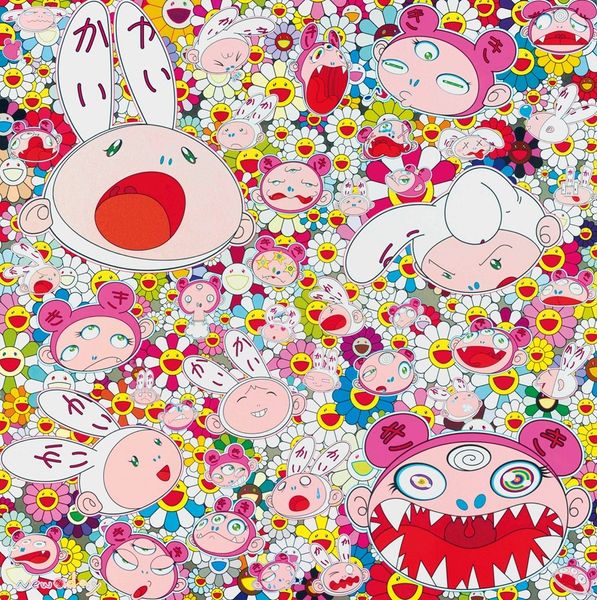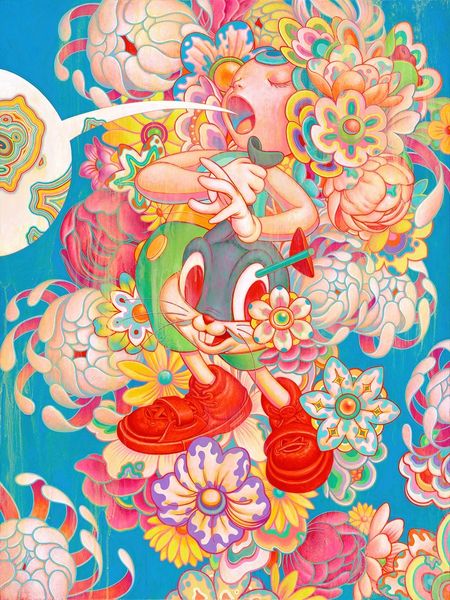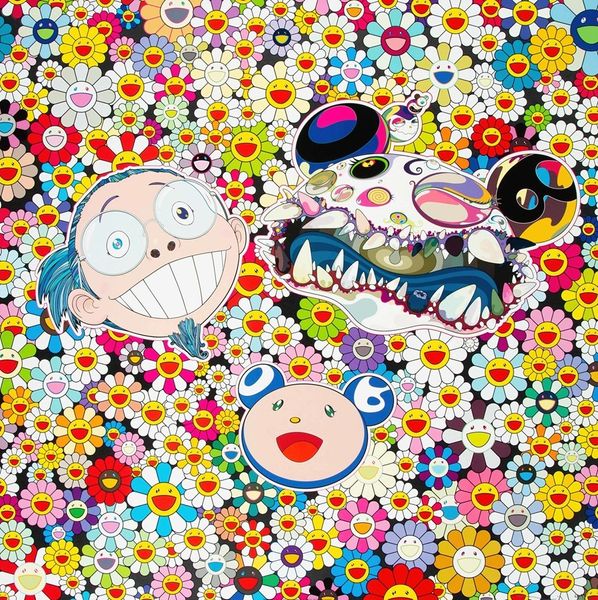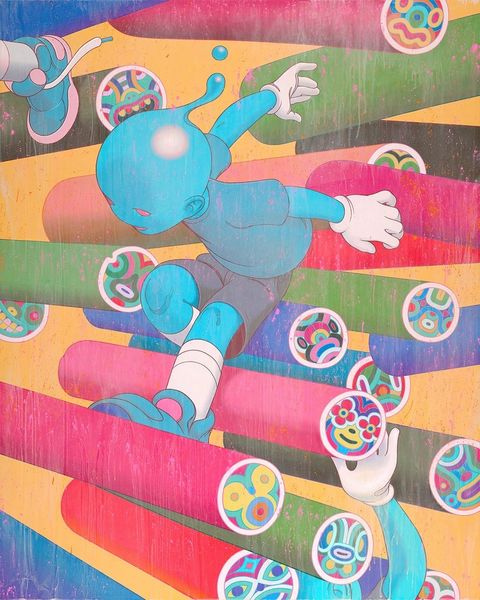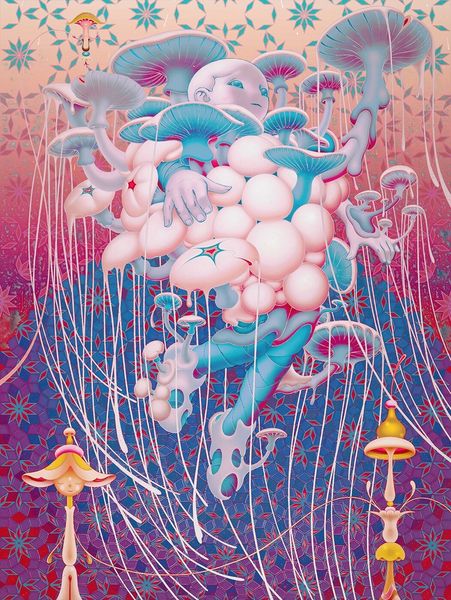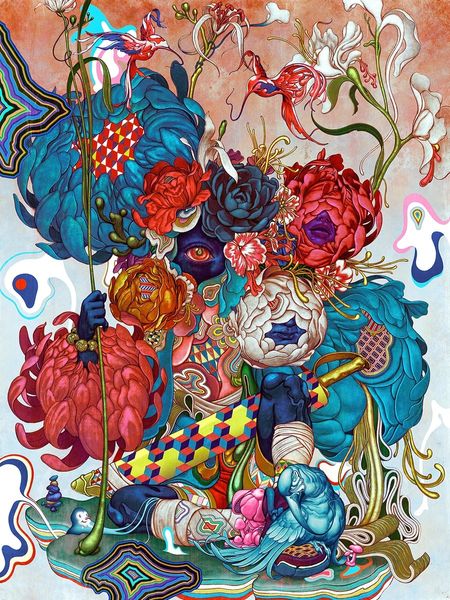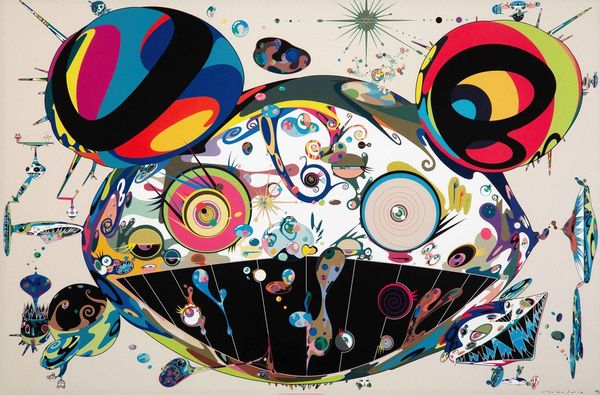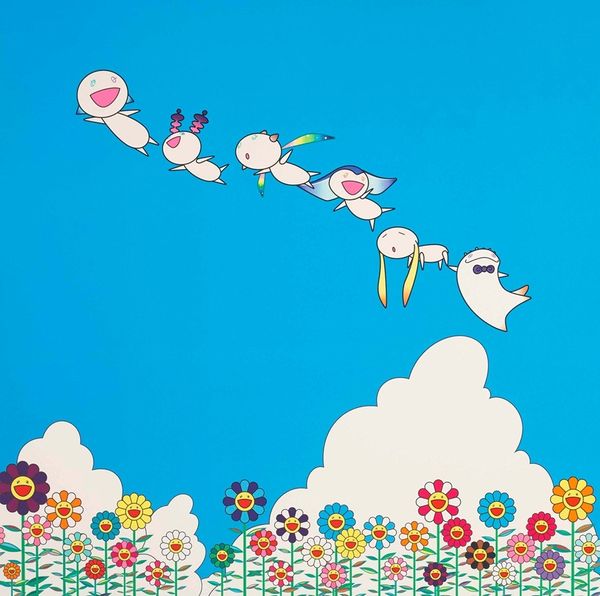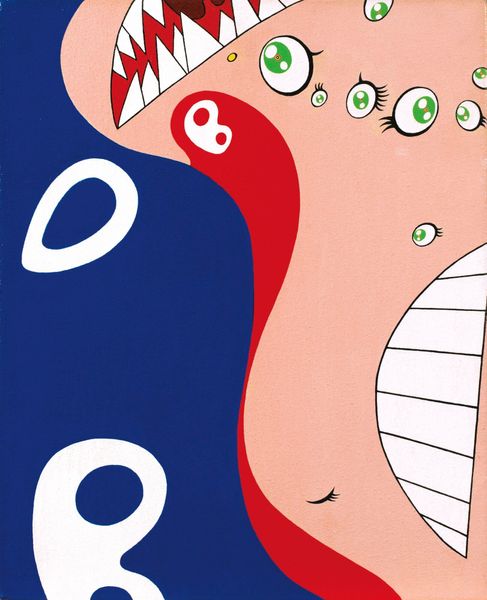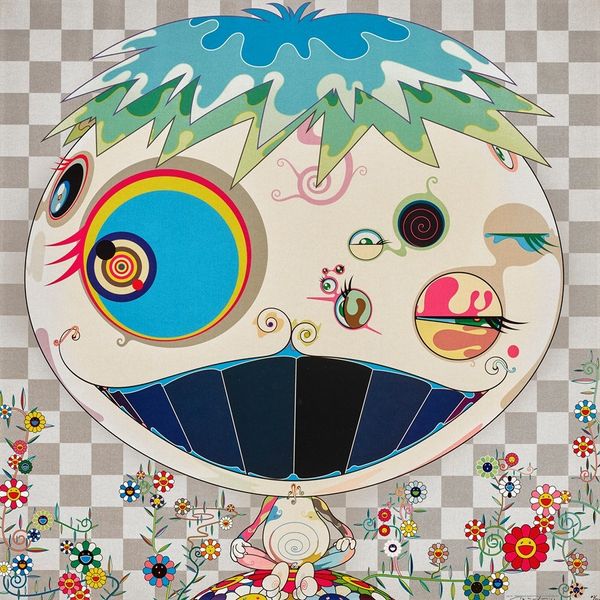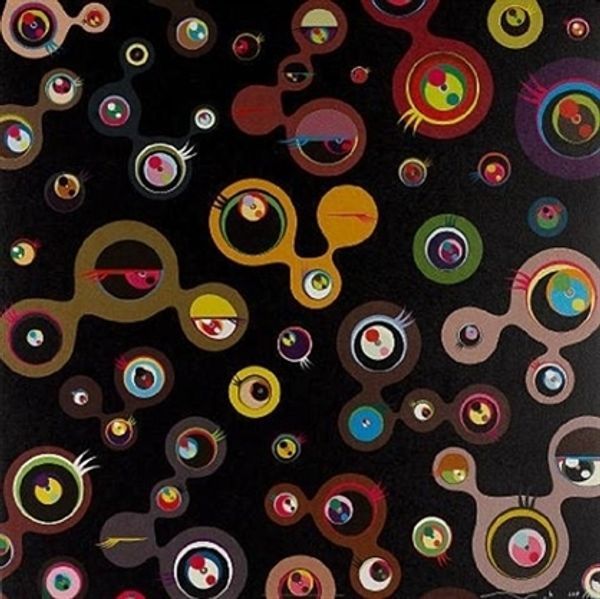
#
neo-pop
Copyright: Modern Artists: Artvee
Curator: Well, here we have Takashi Murakami’s "DOB Flower," painted in 2001. It’s rendered in acrylic. The piece vibrates with color, a symphony of flat planes forming what seems to be some bizarre, cheerful entity. What’s your immediate take on it? Editor: That’s an interesting assessment! Honestly, it's equal parts adorable and slightly unsettling. That grin…it feels a little too wide, a little too…fixed. It’s like a candy-coated dystopia. Those colors though. That shocking pink and blue next to the grey background make this artwork look more appealing and striking! Curator: That unsettling feeling you mention might come from the piece's exploration of consumer culture. Murakami, you see, uses his art as a lens through which to examine the commodification of cuteness in Japanese society, a phenomenon deeply intertwined with psychological escapism. The flowers also resemble manga art style. Editor: Oh, totally. Those wide eyes certainly echo anime characters. But look how those "cute" flowers creep up and consume almost half the background. This creates a slightly suffocating sensation in what it would otherwise be a light and easy piece. Also, let’s talk about the eyes, their placement, and their size. How can this be interpreted through your lens? Curator: You make a brilliant observation. The size and positioning of those big round eyes are certainly essential to grasp the artwork’s psychology. From an iconographic standpoint, exaggerated features often suggest an infantile regression, appealing to a viewer's nurturing instincts while subtly hinting at themes of dependence and a rejection of maturity. A big question that remains is the artist's intentions behind the artwork's color choices, as they appear artificial yet appealing at the same time. Editor: Exactly! And doesn’t the title itself, "DOB Flower," just hint at this idea of rebirth? Like this unsettling cheerfulness sprouting out of something darker. Curator: Precisely! Murakami layers these symbols so expertly, weaving in historical trauma with a very modern sensibility. Thank you for this wonderful chat, I must say, these observations certainly allowed me to deepen my insights regarding this piece of artwork. Editor: Anytime. Analyzing the psychological undercurrents disguised as cuteness, you realize the potency in cultural reflection. That's the true heart of great art, isn't it?
Comments
No comments
Be the first to comment and join the conversation on the ultimate creative platform.
